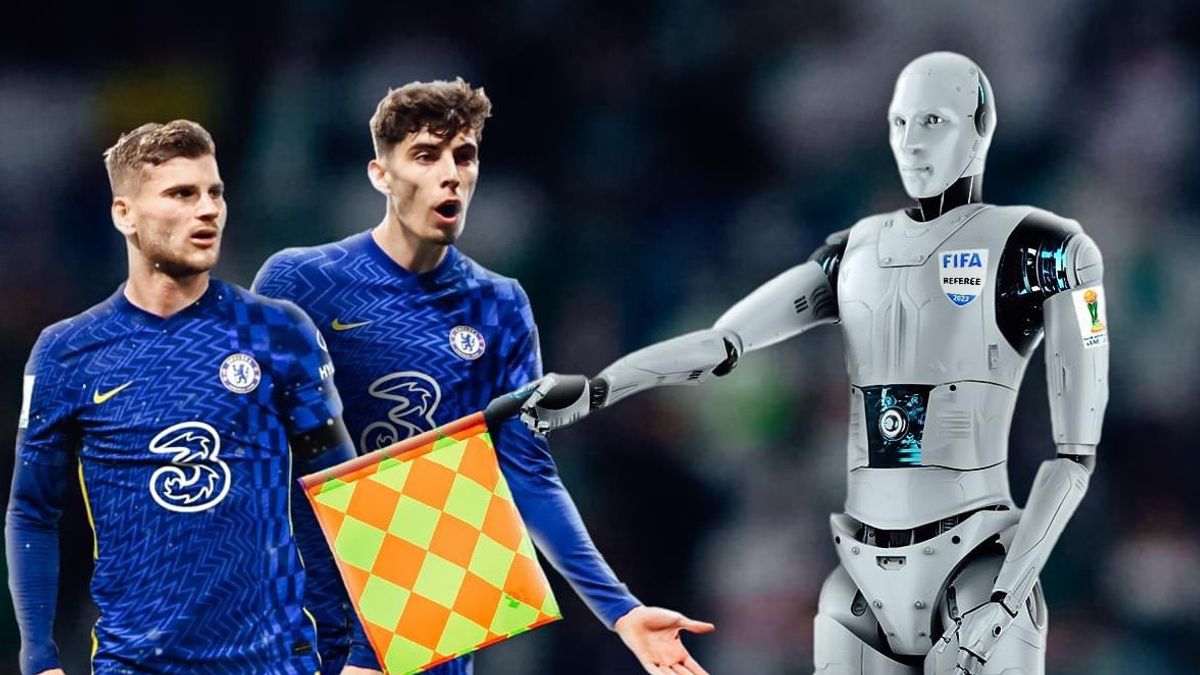JAKARTA - FIFA hopes that the launch of the semi-automatic offside technology being piloted at the Club World Cup will not only speed up decision-making but also provide football fans with greater clarity.
The optical tracking system was first tested at last year's Arab Cup in Qatar, and the main goal is for the technology to be fully deployed for the 2022 World Cup in the Gulf nation later this year.
Pierluigi Collina, chairman of FIFA's refereeing committee, Wednesday told reporters that VAR had proven "very successful" since its introduction but acknowledged more consistency was needed.
"It hasn't been at the very, very top... speed of the decision-making process. Being fast and accurate doesn't go hand in hand," Collina said at the Club World Cup in Abu Dhabi.
"It's important for VAR officials to get accurate decisions, but we realized we needed to shorten the time, especially with offsides."
"Sometimes it takes longer to judge an offside decision, especially in very tight incidents," he said.
"The goal was celebrated, everyone waited and then there was a goal disallowed, or vice versa ... and then after a long time there was a final decision."
Data-driven limb tracking technology relies on a number of specialized cameras and broadcast cameras around the stadium to provide the exact position of players on the pitch, offering referees precise information in seconds.
To increase accuracy, the system currently generates 18 data points per player--tracking various body parts to create a three-dimensional skeletal model.
The goal is to increase that to 29 points for the World Cup to provide further precision, according to head of football technology at FIFA, Sebastian Runge.
Once the final decision is made, artificial intelligence-based technology converts the image into a 3D animation that can be displayed on a big screen in the field.
"By taking that data, we can get into the 3D world and we can create animations, which can perfectly explain whether a player is onside, how far the player is offside or onside," said Runge.
"We're putting it into animations that will be shared with our TV and giant screen operators and we can inform viewers in a clearer way about offside and onside decisions."
More than just a robotDespite the ever-evolving influence of technology, FIFA insists that the referee will still make the final decision.
The VAR officer is responsible for monitoring offsides, checking incidents as they occur, rather than waiting for a stoppage in play.
The official informs the main VAR official, who makes the decision and then speaks to the referee.
"I know there are those who call them 'offside robots', no. Technology is just a tool used by humans," said Collina.
"Referees and assistant referees are still responsible for decisions on the pitch. Technology only provides them with valuable support to make decisions that are more accurate and faster."
Collina used the example of a goal disallowed for offside in Palmeiras' 2-0 semi-final win over Al Ahly on Tuesday as an area where more could have been done to keep fans well informed.
The English, Chinese, Japanese, Arabic, and French versions are automatically generated by the AI. So there may still be inaccuracies in translating, please always see Indonesian as our main language. (system supported by DigitalSiber.id)











